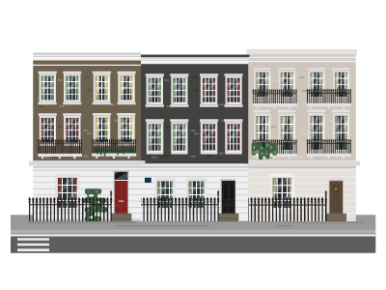Period Property Meaning
- Period properties refer to homes of a specific period, ranging from the 1600s to the First World War.
- Top Tip: Get a full understanding of the period home’s structural integrity with a RICS Level 3 Survey; your mortgage lender’s valuation won’t be a sufficient indicator for you.
- Rising damp might be a problem in properties constructed even after the early 1900s, as they could have ageing or damaged damp-proof courses.
- Negotiation of the property’s sale price might be possible after a full structural survey evaluation but remember that you should seek professional advice before proceeding.
Homebuyers tend to rate character as a must-have feature for their prospective new home. The UK is inundated with period properties, but there is a lot to think about before buying one.
Despite their age, these sorts of properties are proving to be as popular as ever. The styles have stood the test of time and modern homebuyers appreciate the vintage value and individual character of a period property as opposed to the consistent styling of new builds.
Some mock Tudor Houses are still period properties, as many were built in the 18th and 19th centuries.
What is a period property?
A period property does not have a legally binding definition, but people usually refer to an older property as built before World War I.
The loose definition can even stretch back to Elizabethan properties but does not include heritage or listed buildings that are graded according to their architectural and historical significance.
Due to their popularity, buyers are often prepared to pay a premium to own a period property. They tend to retain their value well, but extra value can be added with sensible renovations and restorations of certain period features.
Types of period properties
There are five main types of period properties that you can come across, segmented by each regency period.
However, a Georgian property might have different decorative features to a home built in the same era, since it spanned nearly 120 years.
Elizabethan (1558-1603) – this style of house building was all about appearance with highly decorated architecture, intricate brickwork, large glass panes, and more chimney stacks. These are not to be confused with mock Tudor properties, which were built later to imitate Tudor features.
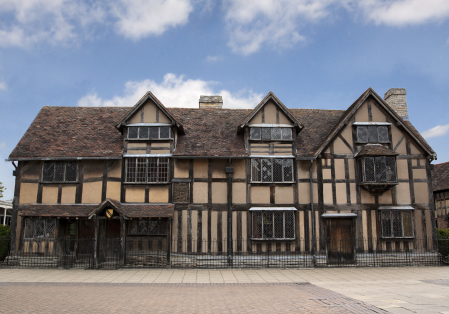
Stuart (1603-1714) – this was the start of the terraced houses trend with a lot of wooden panelling, elaborate fireplaces, and richly plastered ceilings.
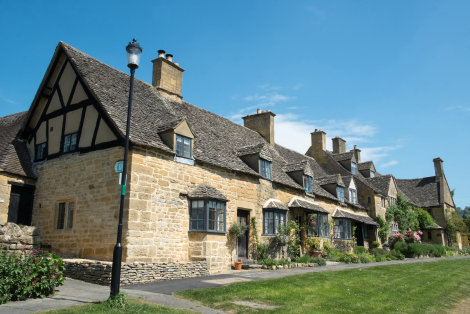
Georgian (1714-1830) – arguably the most popular property type came from Georgian period homes. Georgian properties brought in high ceilings in spacious rooms and sash windows whilst also known for the symmetry of its buildings.

Victorian (1837-1901) – since the UK population more than doubled in the Victorian era, more space-saving terraced homes were popular. With smaller coloured bricks, tall windows, and ornate fireplaces, Victorian properties are popular amongst buyers even today for their distinct features.
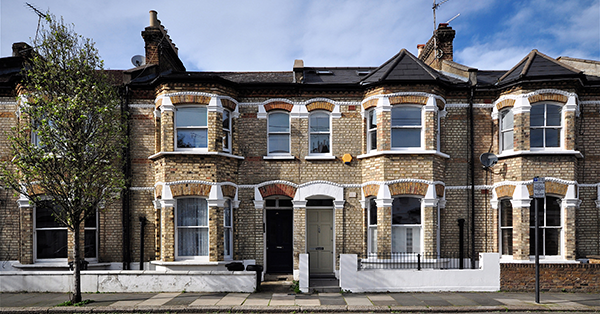
Edwardian (1901-1914) – an Edwardian property was considered less ornate than its Victorian-era predecessors. The Edwardian period brought a style of simple decorative features, wider and brighter rooms, and porches with wooden frames.
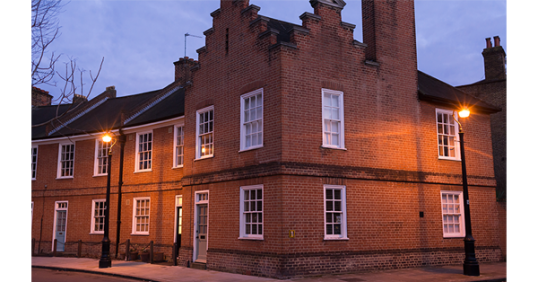
The difference between period houses, purpose-built period flats, and period conversion flats
Conversion flats are created by converting a house or other building which wasn't originally intended to become a set of flats, into another purpose.
Purpose-built flats are planned from the outset and are usually designed more uniformly rather than converted from an original period building.
We're available at short notice and our fees start at £499 EXC VAT.
RICS Surveyors | Fixed Fees | Same week availability | Access arranged
Pros and cons of buying a period property
There are several important pros and cons that you should consider before committing to buy a period property.
Pros
- Character and period attributes – fireplaces, unique sash windows, external decorative pieces.
- Expansive rooms and sizable gardens – useful for buyers looking for a bigger home, and for people who like to put their mark on a property.
- Possibility to add value through reconstruction or restoration – you could add a loft conversion or kitchen extension which isn’t typically possible in a newer build.
Cons
- Potentially poor energy efficiency – more energy is required to heat a period home, so utility bills would be higher.
- Higher maintenance costs – since they are prone to more issues, you are likely to pay more to keep it structurally and aesthetically sound.
- Damp issues – period homes are usually more worn and weathered due to age.
- Onward chains – a period home could already be owned by another party which leads to more stress.
Additionally, if the house has not been electrically rewired for a long time, it will need to be brought up to modern safety standards.
This can be viewed as a potential negative of period properties as an electrician will have to be brought in to complete a full rewire.
Where new wires have been installed, the walls will need to be redecorated which adds another cost, and usually, period properties won’t have enough available plug sockets so more will need to be planned and installed.
What to look for in a period property
If you’re in the market to buy a period property, there are several things you might want to look out for when viewing:
Damp
Houses built before the 1870s would not have damp-proof courses, so they might sometimes suffer from damp issues. However, this is not impossible to solve and is worth investigating before getting in touch with a specialist.
Rising damp might also be a problem in properties constructed after that time, as they could have ageing or damaged damp-proof systems.
Watch out for:
- Brown markings or wall discolouration.
- Mould on the walls and/or ceilings.
- Peeling wallpaper or bubbling plaster.
Energy efficiency
Since modern housing standards tend to be higher for insulation and energy efficiency, a period property might not meet these standards in its current state.
If it has original windows that are blown or simply aged, they can let out a lot of heat. Victorian properties are known for having inferior roof insulation.
The property’s Energy Performance Certificate (EPC) will reveal its efficiency for energy and the improvements that can be made to bring it back up to standard.
In our recent survey, 16% of homeowners found defects; including 2% who were able to pull out of a bad purchase, 7% who were able to negotiate a better price, and sadly, 7% of homeowners who did not get a survey and discovered defects after the purchase.
12 of the 39 who remembered how much these defects cost to remedy spent over £5,000
Don't burn your money, book a survey.

Outdated designs
The modern homeowner and prospective house buyer have different needs from the ones of people in the 1800s and 1900s.
A period property that you’re interested in buying might have ‘strange’ layouts and key features that you are not used to or may not necessarily want. You should factor this in when viewing a property.
Whether the property is listed or in a conservation area
Some period properties are Grade II listed, meaning that future works are limited. If you’re viewing a property that is listed, or in a conservation area, do your research beforehand and speak to the estate agent if you’re unsure.

Level 3 survey for buying a period property
A mortgage lender’s valuation of a period property is not a survey, it simply allows your lender to decide if the home is suitable for the loan.
A level 3 survey, often referred to as a full structural survey, is more suitable for older or larger properties as opposed to a level 2 because it assesses the building’s history, development, and the materials used in its construction.
To get a proper understanding of the property’s condition, a level 3 RICS survey can shed some light on whether you should go ahead and proceed with the purchase or not.
Since the survey report offers a thorough evaluation of any faults in the home’s structure, you might even be able to renegotiate the sale price.
Potential buyers need to communicate any concerns raised from the survey to the seller and their representatives as soon as possible. They might be willing to lower the offer or provide some additional information on the property’s condition.
Before formally reducing your offer, keep in mind that the negotiation process is a complex one and can have legal and financial ramifications. Seek the advice of a conveyancer or solicitor who can assist in the process and protect your interests.
We're available at short notice and our fees start at £499 EXC VAT.
RICS Surveyors | Fixed Fees | Same week availability | Access arranged
Jack is our resident Content Writer with a wealth of experience in Marketing, Content, and Film. If you need anything written or proof-read at a rapid speed and high quality, he's your guy.
Caragh is an excellent writer and copy editor of books, news articles and editorials. She has written extensively for SAM for a variety of conveyancing, survey, property law and mortgage-related articles.

